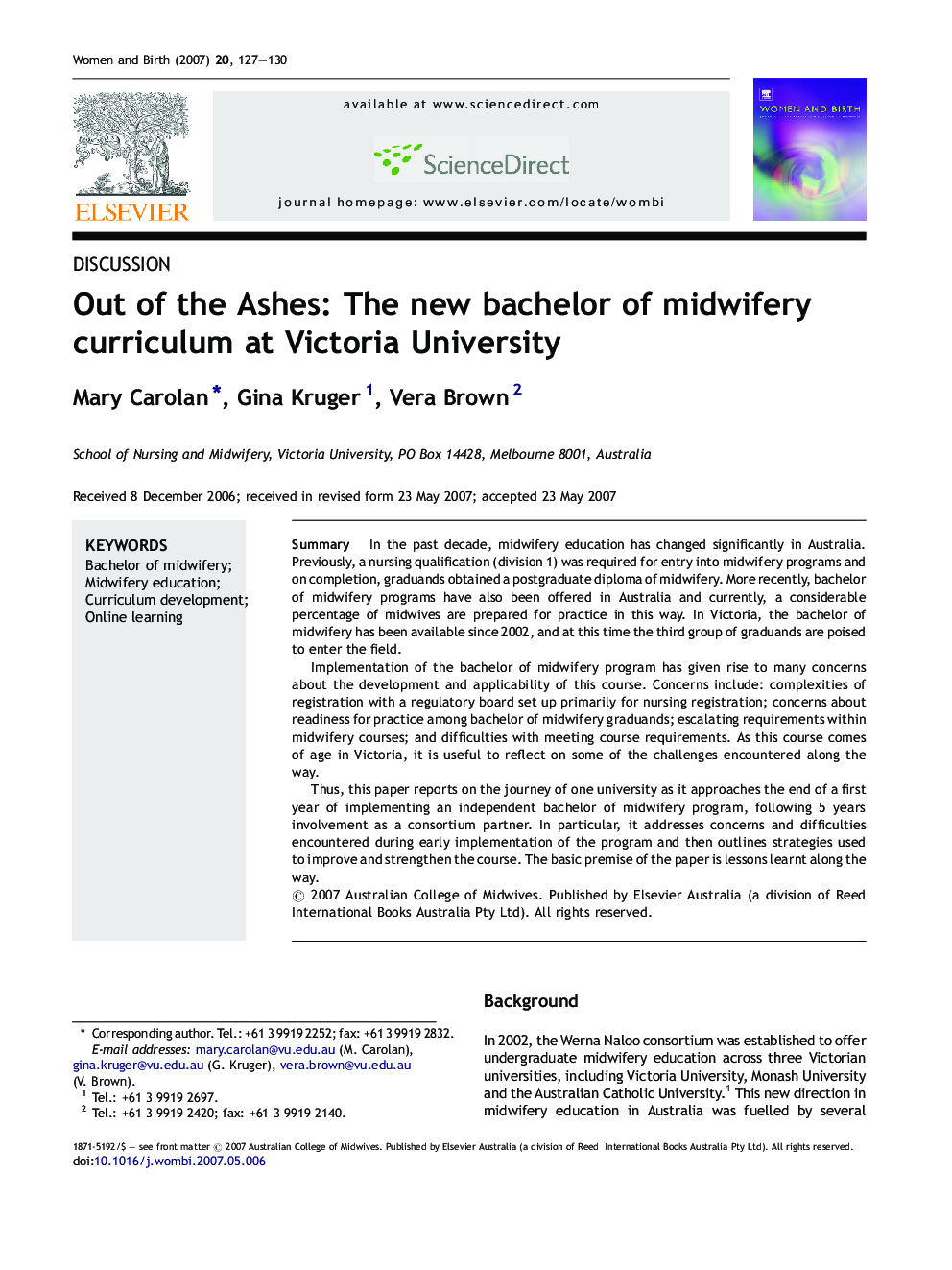| Article ID | Journal | Published Year | Pages | File Type |
|---|---|---|---|---|
| 2636937 | Women and Birth | 2007 | 4 Pages |
SummaryIn the past decade, midwifery education has changed significantly in Australia. Previously, a nursing qualification (division 1) was required for entry into midwifery programs and on completion, graduands obtained a postgraduate diploma of midwifery. More recently, bachelor of midwifery programs have also been offered in Australia and currently, a considerable percentage of midwives are prepared for practice in this way. In Victoria, the bachelor of midwifery has been available since 2002, and at this time the third group of graduands are poised to enter the field.Implementation of the bachelor of midwifery program has given rise to many concerns about the development and applicability of this course. Concerns include: complexities of registration with a regulatory board set up primarily for nursing registration; concerns about readiness for practice among bachelor of midwifery graduands; escalating requirements within midwifery courses; and difficulties with meeting course requirements. As this course comes of age in Victoria, it is useful to reflect on some of the challenges encountered along the way.Thus, this paper reports on the journey of one university as it approaches the end of a first year of implementing an independent bachelor of midwifery program, following 5 years involvement as a consortium partner. In particular, it addresses concerns and difficulties encountered during early implementation of the program and then outlines strategies used to improve and strengthen the course. The basic premise of the paper is lessons learnt along the way.
